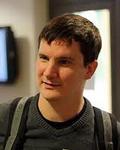Cited By
View all- Hatami PHoza WTal ATell RSaha BServedio R(2023)Depth-𝑑 Threshold Circuits vs. Depth-(𝑑+1) AND-OR TreesProceedings of the 55th Annual ACM Symposium on Theory of Computing10.1145/3564246.3585216(895-904)Online publication date: 2-Jun-2023
- Chen YHuang YLi JRen HSaha BServedio R(2023)Range Avoidance, Remote Point, and Hard Partial Truth Table via Satisfying-Pairs AlgorithmsProceedings of the 55th Annual ACM Symposium on Theory of Computing10.1145/3564246.3585147(1058-1066)Online publication date: 2-Jun-2023
- Cavalar BLu Z(2023)Algorithms and Lower Bounds for Comparator Circuits from ShrinkageAlgorithmica10.1007/s00453-022-01091-y85:7(2131-2155)Online publication date: 13-Jan-2023
- Show More Cited By


